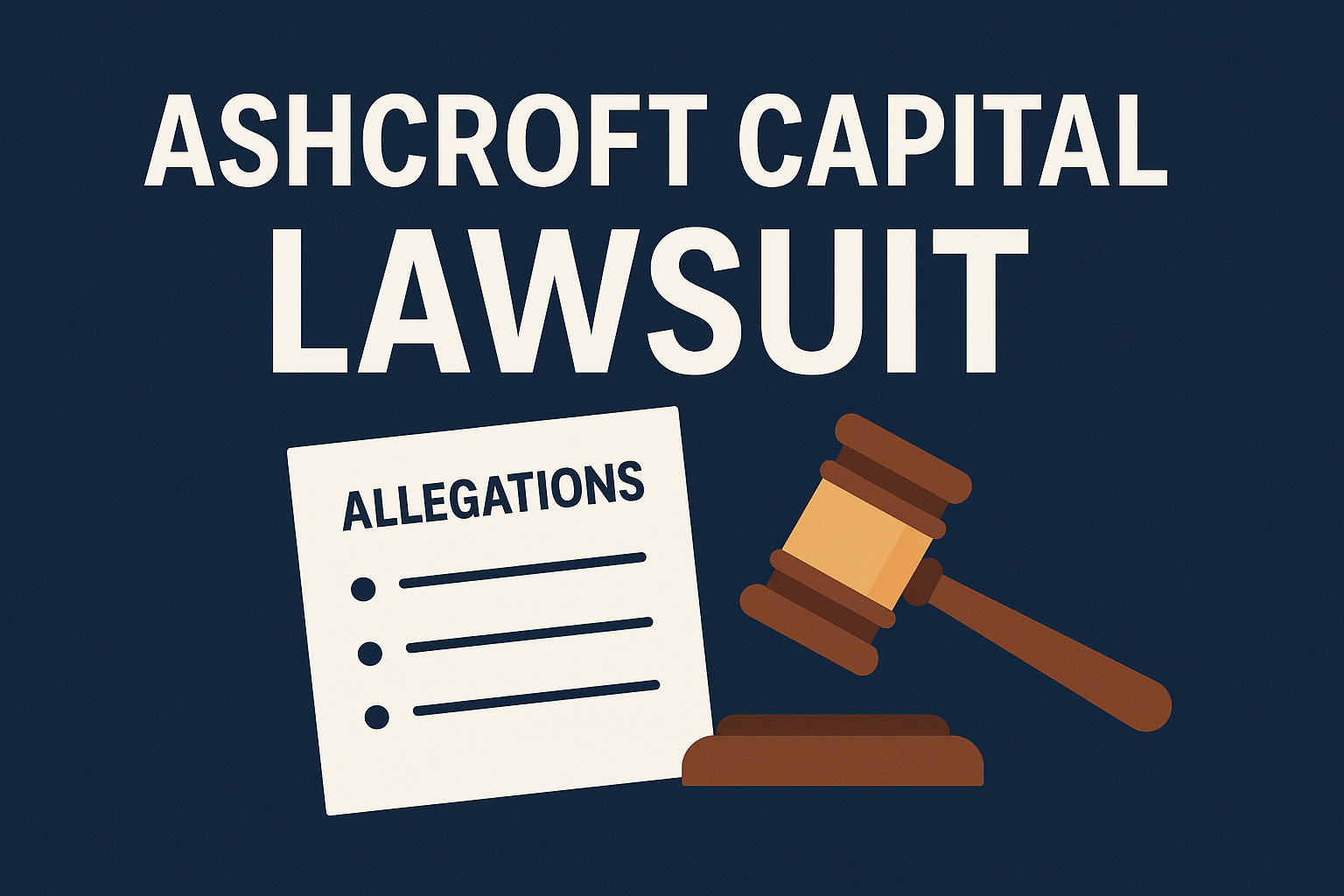Ashcroft Capital Lawsuit: What Investors Need to Know
Ashcroft Capital is a well-known real estate investment company that manages large apartment deals. In February 2025, the firm was sued by a group of investors. The case is called Cautero v. Ashcroft Legacy Funds, LLC. It was filed in the U.S. District Court for New Jersey.
The investors claim that Ashcroft misled them about returns and risks. They also say the company failed to give clear updates and kept charging fees even when projects were losing money. Ashcroft denies the claims.
This article explains the lawsuit in simple terms: what happened, what each side says, and what it means for investors.
Case Overview
| Item | Details |
|---|---|
| Case Name | Cautero v. Ashcroft Legacy Funds, LLC |
| Court | U.S. District Court for the District of New Jersey |
| Case Number | 2:25-cv-01212 |
| Filed Date | February 12, 2025 |
| Judge | Evelyn Padin with Magistrate Judge Cathy L. Waldor |
| Plaintiffs | 12 accredited investors |
| Damages Claimed | $18+ million |
Main Allegations
The investors accuse Ashcroft of the following:
Inflated return projections
IRR numbers were higher than realistic.
Investors say returns were overstated by 4–6%.
Not enough risk disclosure
Risks of floating-rate loans were not explained well.
Some funds had no audited financials.
Renovation delays and costs were not fully shared.
Poor communication
Updates were late and incomplete.
Reports were too positive when performance was weak.
Fees during poor performance
Management fees continued even when investors lost money.
Possible securities law breach
Claims of misleading investors under Rule 10b-5.
Timeline of Events
| Date | Event |
|---|---|
| Feb 12, 2025 | Lawsuit filed in federal court |
| Mar–Apr 2025 | Judge orders Ashcroft to release IRR models, emails, and financial records |
| May 2025 | Plaintiffs file motion to compel, saying Ashcroft hid documents |
| Aug 2025 | Case in discovery; next steps focus on settlement or trial |
Investors Claims
The 12 investors say:
They were convinced by misleading numbers.
Key risks were hidden or minimized.
Ashcroft earned fees while projects underperformed.
They lost $18 million or more in total.
Ashcroft Capital’s Response
Ashcroft strongly denies the claims. They argue:
Projections were estimates, not promises.
Risks were disclosed in the offering documents.
Fees are industry standard and clearly explained.
Investor updates were made in good faith.
The company has also:
Started an internal review.
Hired outside lawyers.
Sent updates to current investors about the case.
What This Means for Investors
The lawsuit teaches investors important lessons:
Key Lessons
Question return projections: Ask how numbers are calculated.
Ask for transparency: Look for audited financials and detailed updates.
Understand fees: Know when and how sponsors earn money.
Be ready for capital calls: Some investors faced surprise calls of almost 20%.
Diversify: Avoid putting all money with one sponsor.
Possible Outcomes
| Outcome | What It Means |
|---|---|
| Settlement | Ashcroft pays to end the case, without admitting guilt. Most likely outcome. |
| Win for Investors | Court awards damages; may set legal precedent. |
| Dismissal | Court finds Ashcroft disclosed enough risk. |
| Class Action | More investors join, raising damages and exposure. |
Wider Impact on the Industry
This case affects more than just Ashcroft.
Investors: Now more careful about marketing claims.
Regulators: SEC and state agencies may increase oversight.
Syndicators: Need to improve risk disclosure and provide clearer updates.
Fundraising: Some investors may prefer larger, more transparent firms.
Do and Don’ts for Investors
Do
Review offering documents closely.
Ask for risk scenarios and stress tests.
Confirm data with third-party sources.
Don’t
Rely only on sponsor reputation.
Overlook debt terms or fees.
Ignore warning signs like late reports or surprise capital calls.
FAQs on the Ashcroft Capital Lawsuit
What is the Ashcroft Capital Lawsuit?
The Ashcroft Capital Lawsuit is a federal case filed in February 2025 by 12 investors who claim the firm misled them with inflated returns, poor communication, and hidden risks.
Who filed the lawsuit against Ashcroft Capital?
The case was filed by a group of 12 accredited investors. They accuse Ashcroft Capital of misrepresentation and breach of fiduciary duty.
How much money is involved in the Ashcroft Capital Lawsuit?
The investors claim losses of more than $18 million. This number could rise if more investors join the lawsuit as a class action.
What is Ashcroft Capital response to the lawsuit?
Ashcroft Capital denies the claims. The firm says all risks were disclosed, projections were only estimates, and fees were standard practice in the industry.
What stage is the Ashcroft Capital Lawsuit in now?
As of August 2025, the case is in the discovery phase. The court has ordered Ashcroft to provide financial models, investor communications, and related documents.
How does the lawsuit affect other investors?
It raises awareness about the risks of private real estate deals. Investors are now demanding clearer disclosures, audited financials, and better reporting before committing capital.
Where can I find updates on the Ashcroft Capital Lawsuit?
Updates are available through court records (PACER or CourtListener) and investor news sites that track the case.
Conclusion
The Ashcroft Capital lawsuit is a major test for private real estate deals. The outcome could shape how future investments are marketed and how much detail sponsors must disclose.
For investors, the lesson is simple: do your homework. Don’t rely only on projected returns or polished presentations. Look deeper into the numbers, fees, and risks.

